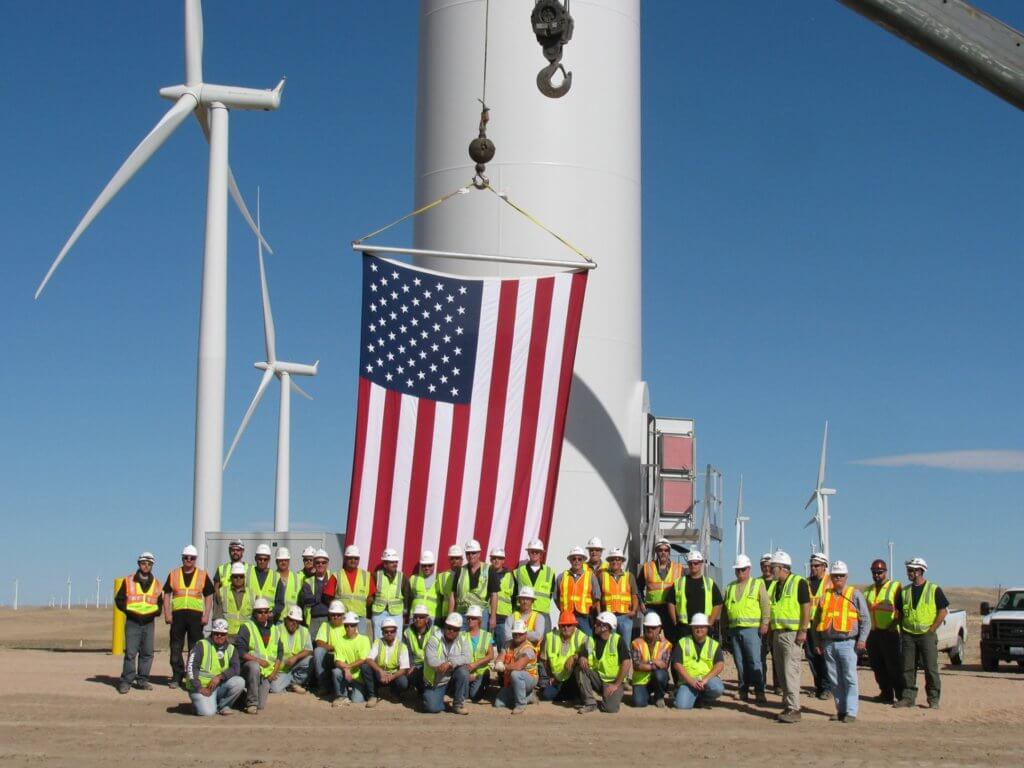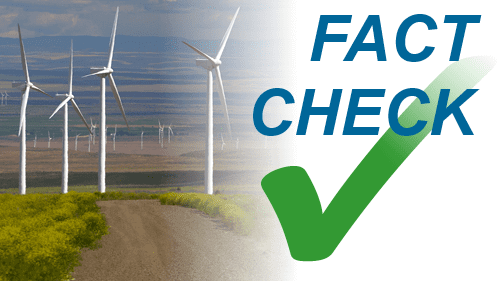Fact check: Bryce missteps on wind and birds
Robert Bryce, of the fossil-fuel-funded Manhattan Institute, had another attack on wind in the Wall Street Journal yesterday. The following was posted as a comment.
Despite the attacks penned by Mr. Bryce, the fact remains that the wind industry maintains a positive, proactive approach to protecting wildlife. In fact, the US Fish and Wildlife Service (USFWS) gladly acknowledges that wind energy is not even close to being a leading cause of mortality with respect to birds. While some birds do occasionally collide with wind turbines, this impact needs to assessed in comparison to all the other existing human-caused sources of mortality, and when assessed from this or any other standpoint, modern wind power plants are cumulatively far less harmful than are airplanes, vehicles or tall buildings – just to name a few.
However, putting aside the comparatively lower wildlife impacts associated with wind power development and production, the wind industry also sets itself apart from other, more lethal sources of energy production by collaborating with the regulatory and wildlife conservation communities to further limit its effect on birds and other wildlife. An example of this is the 3-1/2 year process in which the wind industry collaborated, in a structured Federal Advisory Committee Act (FACA) process, with a broad group of stakeholders, including the USFWS, states, environmental organizations, and native American tribes to provide protections for migratory birds and other wildlife that go far beyond what is required by federal wildlife laws. Contrary to Mr. Bryce’s opinion, the wind industry looks forward to the issuance of the final Wind Energy Siting Guidelines.
With respect to his assertions that the wind industry is given some sort of “free pass” with respect to wildlife laws, it is important to understand that due to the broad-sweeping nature of the 1918 Migratory Bird Treaty Act (strict-liability law, meaning that anyone who kills even one bird, either knowingly or unknowingly, could be prosecuted for a violation of the Act), which was created to protect against the wholesale slaughter of birds for their feathers and sport, in order for our society to function, the USFWS must use discretion when enforcing this regulation. To be absolutely clear here, there is no conspiracy here to protect certain industries over others. Instead, the USFWS focuses its enforcement efforts on entities that kill birds without identifying and implementing reasonable and effective measures to lessen their impacts.
Given that the wind industry explicitly goes above and beyond its legal requirements to protect wildlife and to consult and collaborate with the USFWS and conservation community, it is understandable that the USFWS would want to focus its prosecution efforts elsewhere.
But, the fact remains that the combined benefits of wind energy (no pollution or water usage associated with energy production, zero carbon emissions, etc.) all serve to make wind power far more friendly to wildlife (and humans!) than other more traditional forms of energy production.
As families across our country struggle with unemployment, and as businesses are cutting back just to survive, it’s past time to refocus our ideas and efforts on proposals that will create jobs and get our economy moving again. Wind energy is clean, affordable, homegrown and one of the fastest-growing sources of new American manufacturing jobs. Further, the wind industry has historically demonstrated a strong commitment to lessen its already minimal impacts on wildlife and their habitats and will continue in this vein in the future. With all this in mind, it is clear that the case for continuing to invest in a form of energy production that has a net-positive effect on the environment and economy is very strong.
Related articles:
Colorado collaboration: Wind companies, conservation groups agree on wildlife best practices, February 6, 2012
The Fish & Wildlife Eagle Permit Rule: Our perspective, January 10, 2012
Wind power's impact on birds: modest, December 15, 2011
Bird fatalities at Laurel Mountain substation, November 9, 2011
Birds and wind: Bad news leads, good news in weeds, August 29, 2011
Fact check: Fox News off base on bird collisions, August 19, 2011
News story draws questionable conclusions from eagle collisions with old turbines, June 6, 2011
WINDPOWER report: Whooping cranes may avoid wind farms, more research ahead, May 25, 2011
Wind developer launches intensive avian monitoring program, May 23, 2011
AWEA files comments on "unworkable" U.S. Fish & Wildlife Service guidelines, May 19, 2011
U.S. Fish & Wildlife Service, AWEA, wind developers sign agreement to promote endangered species conservation, April 20, 2011
Wind industry backs research on bat concerns including White-Nose Syndrome, April 1, 2011
Wind turbine bird threat modest, January 18, 2011
Editorial: How serious is threat to birds?, January 5, 2011
Wind energy and birds: No double standard, September 9, 2009
Wind-wildlife group names first president, February 24, 2009
Related articles on disinformation from Robert Bryce:
Fact check: Bryce whopper on land use, January 19, 2012
Are these comments Robert Bryce doesn't want you to see?, December 23, 2011
Fact check: Bryce ignores renewable energy's benefits, attacks companies that make it, suggests they face a tax increase, December 21, 2011
Fact check: Bryce overlooks another convenient truth, December 14, 2011
Fact check: Bryce goes astray on jobs, land use, and more, November 22, 2011
Fact check: Bryce again misinforms on wind costs/benefits, October 20, 2011
Fact check: Bryce errs on incentives, wind's popularity, October 13, 2011
Fact check: Bryce whiffs on wind power and Texas heat wave, August 12, 2011
Robert Bryce, King of the NIMBYs, August 10, 2011
Fact check: Bryce out to lunch with latest anti-wind broadside, August 3, 2011
Fact check: Bryce, Bentek miss on emissions, July 20, 2011
Fact check: Bryce stumbles on land use, sound, steel, benefits, June 8, 2011
Power hungry? Or just on a low-fact diet? (Michael Goggin's review of Robert Bryce's book Power Hungry), July 2, 2010




